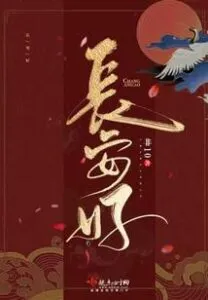After Becoming a Taoist - ~ Buddhist temple
After Buddhism was introduced to Xi’an in 67 AD, it flourished in my country during the Han and Tang Dynasties. The temples in the ancient capital of Xi’an are very beautiful. The more famous ones are Qinglong Temple, Furong Garden, Daci’en Temple, Xianyou Temple, Daqin Nestorian Temple, Great Mosque, Daming Palace, Big Wild Goose Pagoda, Small Wild Goose Pagoda, etc.
Xi’an Qinglong Temple is located in the north of Tielumiao Village in the southeastern suburbs of Xi’an. It was built in 582 and was formerly known as Inspiration Temple.
Qinglong Temple is one of the famous Buddhist temples in the Tang Dynasty. The prosperity of Buddhism in the Tang Dynasty was unprecedented, and the Buddhist temples in the city were even more prominent.
especially had a great influence on the development of religion in Japan at that time. From the beginning to the middle of the 9th century, Japanese monks who entered the Tang Dynasty to seek the Dharma, the monks and the monks, visited Chang’an frequently. They received the Dharma at Qinglong Temple, making Qinglong Temple one of the most influential temples in spreading Buddhist tantra to the outside world.
In 583, Emperor Wen of Sui built the prestigious Royal Garden Furong Garden. In the Tang Dynasty, the garden was expanded again. In addition to the addition of Ziyun Tower, Caixia Pavilion, Liangtang and Penglai Mountain in Furong Garden, a large-scale water conservancy project, the Yellow Canal, was excavated to expand the water surface of Furong Pool and Qujiang Pool. . It has gradually become a place for royalty, monks and commoners to visit.
During the Kaihuang period of the Sui Dynasty, Emperor Wen of Sui ordered people to build the world-famous Buddhist temple Dacien Temple. Daci’en Temple is one of the four translation sites in Chang’an in the Tang Dynasty, and it is also the ancestral court of the Chinese Buddhist Fa-xiangzhi-only sect. It has a history of more than 1,300 years.
Ci’en Temple was originally called Wu Lei Temple. In 648, when Emperor Gaozong Li Zhi became the crown prince, it was expanded again in memory of his mother, Empress Wende.
The monastery of Ci’en Temple is very large, with 13 courtyards, nearly 900 houses, Yunge Temple, double buildings and complex halls, which are very luxurious. Xuanzang, an eminent monk in the Tang Dynasty, was appointed by the imperial court and was the first abbot of the monastery, and he translated Buddhist scriptures here for more than 10 years.
In the mountain gate of the monastery, there is a bell tower and a drum tower facing each other. The main buildings on the central axis are the Daxiong Hall, the Fatang, the Big Wild Goose Pagoda, and the Xuanzang Sanzangyuan. The bells and drums are the orders of the monastery, and there is a saying that the bells and drums are in the morning and evening.
There is an iron bell hanging in the bell tower on the east side, weighing about 15 tons and more than 3 meters high.
Once the students in the Tang Dynasty passed the Jinshi examination, they went to the Ci’en Pagoda to inscribe their names, which was called the Yanta inscription, and later became one of the important cultural activities.
In 601, Emperor Wen of Sui built a palace on the north and south banks of the Heishui River and named it Xianyou Palace. The south temple is called Xianyou Temple, the north temple is called Zhongxing Temple, and there is a black water pool between the two temples, also called Xianyou Lake.
According to historical records, Emperor Wen of Sui Yang Jian was raised in Fengyi Prajna Monastery since he was a child, and when he returned to Yang’s family when he grew up, the female nun Zhixian handed him a bag of 31 relics in total.
In 601, Emperor Wen of Sui ordered 31 prefectures across the country to build relic pagodas for worship, and at the same time to enter the pagodas, including the Dharma King Pagoda of Xianyou Temple in Xi’an. Later, except for the relics of Xianyou Temple, the condition of the other 30 pagodas and relics is unknown.
Descendants found a gold-plated bronze coffin in the Dharma King Pagoda of Xianyou Temple. The glass bottle in the coffin contains 10 Sui Dynasty relics discovered for the first time in China, as well as a stone tablet with double-sided engraving and a stone letter. This has a very important value in the history of Buddhism in our country.
In the Tang Dynasty, Xi’an was changed to Chang’an and served as the capital of the Tang Dynasty. Miyagi completely coincides with XA City, and the Imperial Palace coincides with the Ming City Wall. Most of the tombs of the Tang Dynasty emperors, such as Zhaoling and Qianling, are located in XY city. Xi’an’s religious culture is extremely developed.
Among the eight major sects with far-reaching influence in my country and Southeast Asia, there are 6 sects whose ancestors are located in Xi’an. Chang’an Buddhism has a major influence on Buddhism in Japan, Korea and Southeast Asian countries. Monks and Buddhists from many countries often come to the Buddhist temples in Chang’an to worship and communicate.
Tang Dynasty temples such as Xingjiao Temple, Caotang Temple, Guangren Temple, a Tibetan Buddhist temple, etc., have a great influence in history.
Among them, the most influential temples are Louguantai, one of the birthplaces of Taoism in Zhouzhi County, Xi’an Baxian Temple, Chongyang Palace in Hu County, the ancestral home of Taoism Quanzhen School, and the Old Mother’s Hall in Lintong.
Christianity has a history of more than 1,300 years since it was introduced to Xi’an from the record in the “Great Qin Nestorian Popular China Stele”. The famous Christian monastery in the Tang Dynasty was the Daqin Nestorian Temple. The temple is located at the foot of Zhongnan Mountain in Zhouzhi County, on the west side of Louguantai, and there is only one ancient pagoda.
In 651, *** religion was introduced to Xi’an. There are 21 mosques in Xi’an, of which the most influential mosque is the Great Mosque.
Xi’an Mosque is located in Huajue Lane, northwest of the Drum Tower on Xi’an West Street. Because it is far from east to west and large in scale from the mosque in Daxuexiang, it is also called the Dongda Temple or the Great Mosque.
According to the existing inscriptions in the temple, the Great Mosque was founded in 742, which is the first year of Emperor Xuanzong Li Longji Tianbao of Tang Dynasty. The monastery covers an area of more than 13,000 square meters, with a construction area of more than 6,000 square meters. The whole temple is rectangular along the east-west direction and is divided into four courtyards. The courtyard is lined with trees, the flower beds are arranged symmetrically, and the stone archway stands in the middle.
The well-known Daming Palace site is located on the Longshou Plain in the northern suburb of XA City, and it is an integral part of the Forbidden Garden of Chang’an City in the Tang Dynasty. Daming Palace was originally the place where the emperor’s court met. Later, during the reign of Wu Zetian, Daming Palace was renamed Penglai Palace and presided over the government here.
Daming Palace was built in 634, and later, it was repeatedly damaged by war. In 896, Daming Palace was destroyed by fire. The Daming Palace site has a circumference of 7.6 kilometers and a total of 11 gates. The main street in the city, Danfengmen Street, is 176 meters wide. More than 40 palace pavilion sites have been discovered, most of which are concentrated around Taiye Pool in the north of the city, mainly including Hanyuan Hall, Linde Hall, Sanqing Hall, Qingsi Hall, Xuanzheng Hall and Zichen Hall.
The northern part of Daming Palace is a palace garden area. The architectural layout is relatively sparse and the architectural forms are various. It can be called a masterpiece of garden architecture in the Tang Dynasty.
Among the Buddhist architectural art of Xi’an in the Tang Dynasty, the most famous are the Big Wild Goose Pagoda and the Small Wild Goose Pagoda.
The Big Wild Goose Pagoda, also known as the Dacien Temple Pagoda, is located in the Dacien Temple in the southern suburb of XA City. It was built in 652. Master Xuanzang built a temple in the West Pagoda of the Ci’en Temple to worship the Buddha statues, relics and Sanskrit classics brought back from India. 5-story brick tower. The Big Wild Goose Pagoda was rebuilt many times after Wu Zetian’s Chang’an period. The Big Wild Goose Pagoda is a famous tourist attraction in Chang’an, so there are a large number of inscriptions of scholars and scholars in the past dynasties.
Big Wild Goose Pagoda is a pavilion-style brick pagoda. The height of the pagoda is 64 meters. The pagoda body is 7-storey. The pagoda body is a square cone. There is an arched door on each of the four sides of each floor, which can be overlooked by the railing. The whole building is magnificent, simple and stable in shape, moderate in proportion, solemn and simple in style, and is a relatively well-preserved pavilion-style tower. The tower is equipped with stairs for people to climb, overlooking the ancient city of Xi’an.
The Small Wild Goose Pagoda is also known as the Jianfu Temple Pagoda. The official name of the Small Wild Goose Pagoda should be the Jianfu Temple Pagoda. It is located in the Jianfu Temple outside the south gate of XA City. famous Tang Dynasty pagoda.
It is beautiful in shape and is an exquisite Buddhist architectural art heritage in the Tang Dynasty.
The distance between the Small Wild Goose Pagoda and the Big Wild Goose Pagoda is about 3 kilometers. Because it is smaller than the Big Wild Goose Pagoda, it is called the Small Wild Goose Pagoda.
Jianfu Temple was built in 662, a hundred days after Tang Gaozong Li Zhi’s death, the clan royal family was built for him. The Small Wild Goose Pagoda was built to store the Buddhist scriptures and Buddhist pictures brought back from Tianzhu by the eminent monk Yijing in the Tang Dynasty.
Small Wild Goose Pagoda is located in Anrenfang, where the pagoda courtyard is part of Jianfu Temple, but the pagoda courtyard was not in Jianfu Temple at that time, but across the street from the gate of Jianfu Temple.
During the war in the late Tang Dynasty, Jianfu Temple was repeatedly destroyed and the temple was destroyed, only the Small Wild Goose Pagoda was preserved.
The Small Wild Goose Pagoda is a dense eaves-style brick building with a beautiful tower shape. It is an exquisite architectural art heritage in the Tang Dynasty in my country.
The Small Wild Goose Pagoda preserves a large iron bell cast in the Jin Dynasty. The iron bell is 4.5 meters high and weighs more than 1 ton. It is engraved with the 16-character auspicious words “Long Live the Emperor, Minister Qianqiu, Guotai Min’an, ** Changzhuan”.














